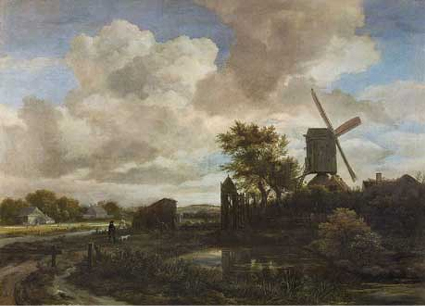Dutch Landscapes at the Queen’s Gallery. By Andrew Graham-Dixon.
Over the centuries the British have had something of a love-hate relationship with Dutch painting. John Ruskin attacked what he saw as its dry, empty literalism: “the patient devotion of besotted lives to delineation of bricks and fogs, cattle and ditchwater”. He was echoing the even more caustic remarks of the eighteenth-century connoisseur Horace Walpole, who pigeonholed the painters of Holland as “drudging Mimics of Nature’s most uncomely coarseness”, complaining that they “thought a man vomiting a good joke; and would not have grudged a week on finishing a belch, if mere labour and patience could have compassed it.”
Yet at the same time British art collectors showed an enduring affection for Dutch painting, a taste reflected in the National Gallery’s rich holdings of Rembrandt, de Hooch, Hals, Avercamp and Vermeer. That taste is also reflected in the shape of the royal collection, thanks largely to the enthusiasm of George IV. “Dutch Landscapes”, an exhibition at the Queen’s Gallery next to Buckingham Palace, testifies to his devotion to the painting of Holland during its so-called Golden Age, namely the middle to later years of the seventeenth century. The show contains some 40 pictures, no fewer than 32 of which were purchased by the future king, while still Prince Regent, in a spending spree that lasted from 1809 until 1820. “Mad” King George’s affection for Dutch art was likely related to his mental instability. He detested the large and nightmarishly phantasmagoric history paintings turned out by the then President of the Royal Academy, Benjamin West, complaining that they made him feel ill. By contrast, it seems that he found a kind of solace, a soothing antidote to the nervous vagaries of his own disposition, in the reassuringly solid and grounded art of...


